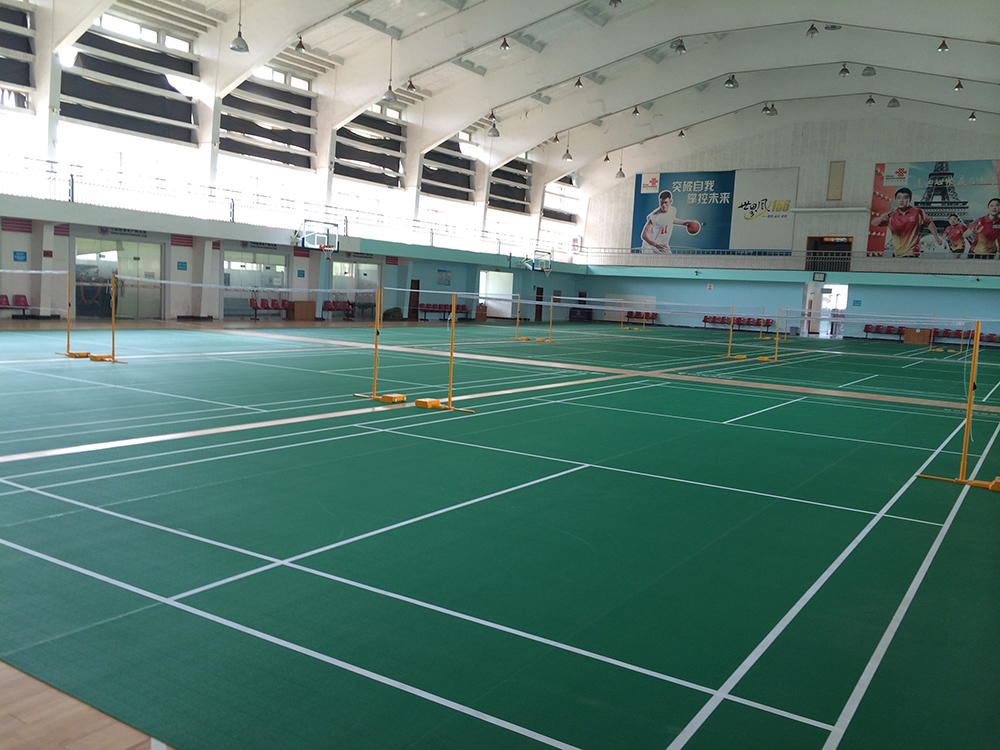Aug . 12, 2024 10:16 Back to list
Choosing the Best Flooring Options for Table Tennis to Enhance Your Playing Experience
The Importance of Floorings in Table Tennis
Table tennis, often recognized as one of the most exhilarating and fast-paced sports globally, demands not only skill and agility from its players but also a proper environment to support their performance. The flooring is a crucial aspect in this regard, as it greatly impacts the game’s dynamics, the players' footwork, and overall safety. Understanding the various types of table tennis flooring and their significance can enhance both amateur and elite players' experiences.
Types of Table Tennis Flooring
Table tennis floors typically fall into two main categories wooden floors and synthetic surfaces
. Each option has its advantages and disadvantages, catering to different playing styles and environments.1. Wooden Flooring Often regarded as the traditional choice, wooden flooring is widely used in professional settings. Common materials include maple, birch, and oak, known for their durability and resilience. Wooden surfaces provide excellent shock absorption, which is vital for players who perform quick lateral movements. The choice of wood can affect ball bounce and speed, giving players more control over their shots. Moreover, wooden floors tend to create a warmer aesthetic, contributing to a more inviting atmosphere during matches.
2. Synthetic Surfaces Synthetic flooring options have gained popularity, especially in multi-sport facilities. These surfaces, often made from materials like polyurethane or PVC, offer a range of textures and resilience levels. They are engineered for good ball response and consistent bounce, making them suitable for competitive play. One of the advantages of synthetic flooring is its ease of maintenance and ability to resist wear and tear. Additionally, they come with various designs and colors, allowing facilities to cater to aesthetic preferences.
Factors to Consider in Table Tennis Flooring
table tennis flooring

The selection of flooring can profoundly influence the game's dynamics. Here are some essential factors to consider
- Ball Bounce The flooring material affects how the ball interacts with the surface. A floor with too much give can absorb too much energy, leading to lower bounce, which may hinder fast-paced gameplay. Conversely, a very hard floor can result in unpredictable bounces, making it challenging for players to react. A balanced surface is crucial for consistent play.
- Traction Players need a flooring that provides adequate grip to allow for quick movements without slipping. High-quality table tennis flooring is designed to offer optimal traction, promoting safety and confidence while executing fast footwork or sudden direction changes.
- Shock Absorption The flooring must offer sufficient cushioning to protect players' knees and joints, especially during intense matches. Over time, poor shock absorption can lead to injuries. Hence, investing in floors that provide good cushioning can enhance player longevity and performance.
- Maintenance Regular upkeep of the flooring prolongs its life and maintains its playing qualities. Wooden floors may require periodic refinishing, while synthetic surfaces usually need simple cleaning. Choosing the right type of flooring can simplify maintenance efforts and ensure a consistent playing experience.
Conclusion
Choosing the right table tennis flooring is not merely a logistical decision but a fundamental aspect that influences player performance and safety. Whether opting for traditional wooden floors or modern synthetic surfaces, the best choice depends on the players' needs and the level of competition. Ultimately, investing in quality flooring is investing in the sport’s integrity, ensuring that players can perform at their best in a safe and conducive environment. As the sport continues to evolve, so too will the technologies and innovations surrounding table tennis flooring, shaping the future of this spectacular game.
-
Converting Tennis Court to Pickleball Fast & Affordable Solutions for Any Facility
NewsJul.04,2025
-
Professional Tennis Court Lining Services Pickleball Court Marking Experts
NewsJun.24,2025
-
Pickleball Court for Sale - Premium Flooring Solutions for Sports Venues
NewsJun.10,2025
-
Maple Grove Outdoor Pickleball Courts - Premium Conversion & Durable Materials
NewsJun.10,2025
-
Best Pickleball Outdoor Courts Solutions Convert Tennis Courts, Outdoor Covered Courts, Maple Grove Options
NewsJun.10,2025
-
Convert Tennis Court to Pickleball Fast & Affordable
NewsJun.09,2025

